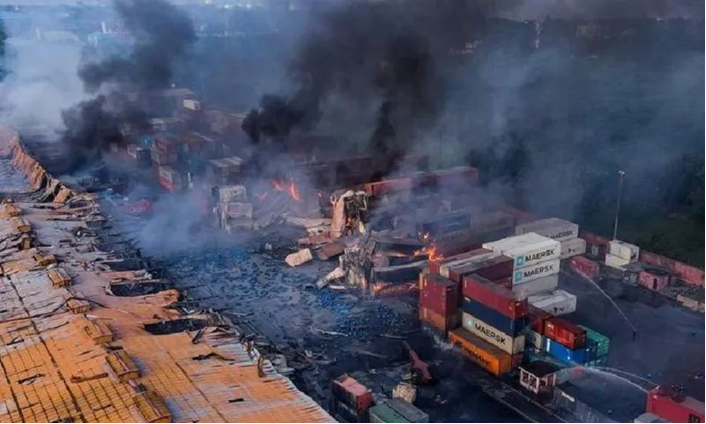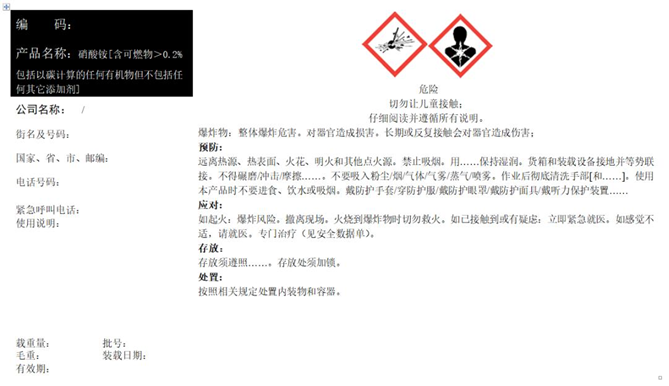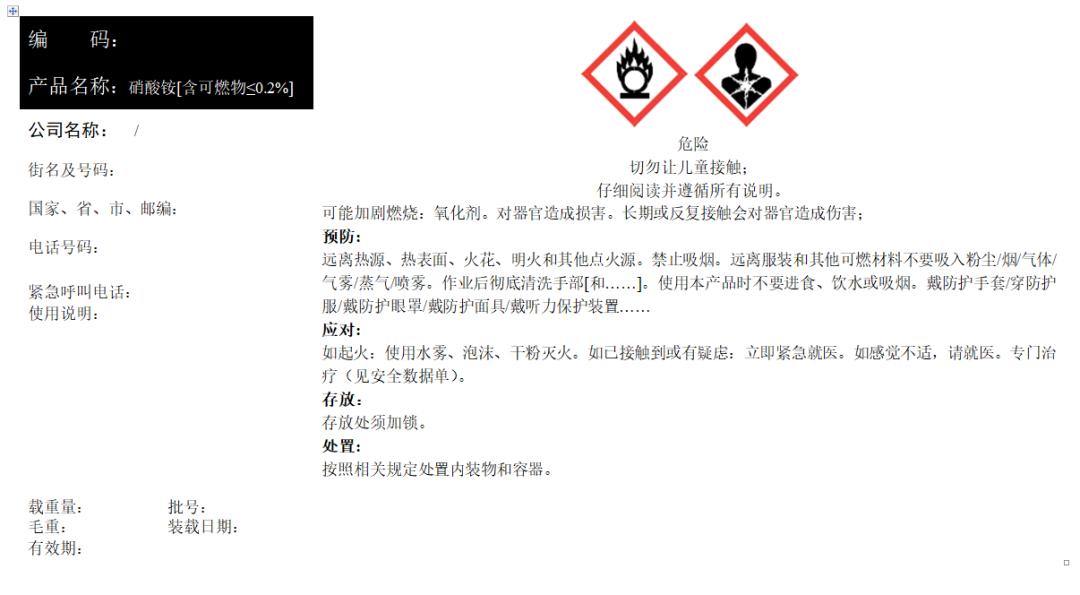
TEL:+86 020-32166206/+86 020-32984581
Swipe left or right to see more categories
GHS labelling, the identity card for hazardous chemicals
Time:
2023-08-21
Source:
Author:
Hazardous chemicals are highly toxic and other chemicals that have properties such as toxicity, corrosion, explosion, combustion and flammability, and are hazardous to humans, facilities and the environment. Since industrialisation, the potential safety hazards posed by hazardous chemicals have been a great challenge to human society.

On 4 June 2022, at least 49 people were killed and more than 300 injured, and between 1,000 and 1,300 fully loaded containers were burned or damaged when a fire broke out and caused an explosion of containers containing chemicals at a container warehouse of 4,000 containers on about 30 acres near Chittagong port in southern Bangladesh, where the fire spread rapidly.
Bangladeshi officials noted that the operator had mislabelled hydrogen peroxide (hydrogen peroxide), which led to a miscalculation by firefighters, who mistakenly used water instead of foam to extinguish the fire, causing the chemical to explode, resulting in the deadly blaze.
Had the hydrogen peroxide (hydrogen peroxide) been correctly labelled with a hazard notice on the outer packaging, managers might have been able to remove safety hazards in advance based on the hazard statements and precautionary statements indicated on the labels, and the catastrophe that resulted in the death and injury of a large number of people might not have occurred!

Hazardous publicity labels (GHS labels) are a combination of words, pictograms and codes used to indicate the hazards and safety precautions posed by a chemical, which can be pasted, bolted or spray-printed on a chemical's outer packaging or container!
Hazardous chemicals must be labelled

China's Regulations on the Safe Management of Hazardous Chemicals (State Council Decree No. 591) stipulate at the legal level the mandatory requirements of China's hazardous publicity labelling of hazardous chemicals in Article 15, Article 37 and Article 78 of the Entry.

The General Administration of Customs Announcement No. 129 of 2020, the former General Administration of Safety Supervision's Measures for the Administration of Registration of Dangerous Chemicals (Decree No. 53 of the General Administration of Safety Supervision), and the former Ministry of Environmental Protection's Measures for the Environmental Management of New Chemical Substances, among other regulations, also explicitly point out the mandatory requirement that hazardous chemicals need to be provided with hazardous disclosure labels in the links of import and export, registration of hazardous chemical products, and registration of new chemical substances.

China's national standards on hazardous publicity labelling now include Provisions for the Preparation of Chemical Safety Labels (GB 15258-2009), Specification for the Classification and Labelling of Chemicals (GB 30000 series), and Technical Instructions for Chemical Safety Contents and Sequence of Items (GB/T 16483-2008), and so on. etc.
Basic contents of GHS labels
Basic elements

Chemical labelling: 1) Includes the name of the chemical in English and Chinese, and the name of the hazardous ingredient; 2) For mixtures the name of the main ingredient that contributes to its hazard classification and the concentration (or concentration range) should be indicated.

Pictogram: 1) a graphic depicting the hazardous nature of a hazardous product; 2) there are nine pictograms, in the shape of a square, coloured with a white background, black symbols and a red border.

Signalling words: 1) words indicating the relative seriousness of the hazard; 2) divided into "danger", "warning" and no signalling words.

Hazard statements: 1) Fixed phrases describing the nature of the hazard; 2) Hazard statements that have been developed by GHS for all hazardous item assignments.

Precautionary statement: 1) a phrase to describe the recommended measures; 2) includes four sections: preventive measures, accident response, safe storage, and waste disposal.

Supplier identification: 1) Include the name, address and telephone number of the manufacturer/supplier; 2) In our country, the 24-hour chemical accident emergency counselling telephone number commissioned by the chemical manufacturer or producer is required.
Sample Hazard Publicity Label

Sample Hazard Communication Label for Ammonium Nitrate (Explosives)


Sample Hazard Communication Label for Ammonium Nitrate (Oxidising Substances)


Note: Even for ammonium nitrate products with the same content, when the combustible content is different, the classification results of its hazardous characteristics may be different, and the corresponding hazard labels are very different. Other hazardous chemicals may also have different hazardous characteristics due to the different content of components, and need to make hazardous publicity labels according to the actual classification results!
Import and export hazardous chemicals labelling requirements

Import and export of hazardous chemicals declaration: need to provide a sample of hazardous publicity labels (imports need to provide Chinese samples).

Import and export inspection of hazardous chemicals: whether the product packaging is a hazardous publicity labels (imported products should be a Chinese hazardous publicity labels); whether the content of the hazardous publicity labels in line with the requirements of the regulations.

Exemption: Sample hazard publicity labels are not required for the import and export of bulk hazardous chemicals.
Lessons learnt from blood cannot be ignored.
Always remember to work safely!

Original title: GHS Labelling, the Identity Card for Hazardous Chemicals
2023-08-21
Bozhiyuan Technology (Guangdong) Co., LTD.
Add:5F, No.19, Rongjing Road, Hejing Yushan International, Zengcheng District, Guangzhou
Tel:+86 020-32166206
Mobile:+8613533086813
E-mail:S10@bzychemical.cn
